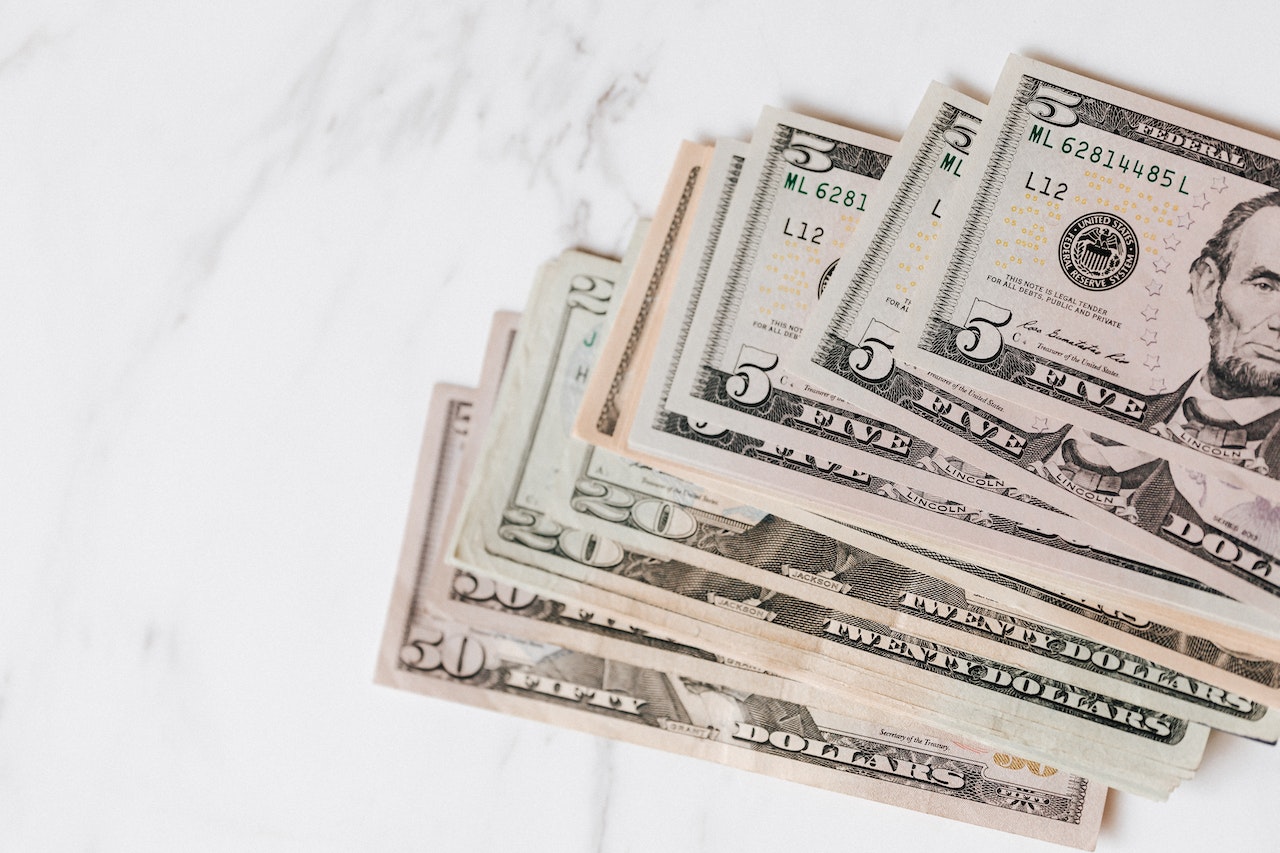

Finance
What It Means To Have $10,000 In Savings
Published: January 16, 2024
Discover the significance of having $10,000 in savings and learn how this milestone can impact your overall financial health. Explore finance tips and strategies to help you reach your savings goals.
(Many of the links in this article redirect to a specific reviewed product. Your purchase of these products through affiliate links helps to generate commission for LiveWell, at no extra cost. Learn more)
Table of Contents
Introduction
Having $10,000 in savings is a significant milestone on the path to financial stability. It represents a cushion that can provide security and peace of mind in times of uncertainty. Whether you’re saving for a specific goal or creating an emergency fund, reaching the $10,000 mark is an achievement that signals financial responsibility and preparedness.
In today’s fast-paced world, unexpected expenses can arise at any time, such as medical emergencies, car repairs, or job loss. Having a substantial savings account can help you weather these storms without resorting to high-interest debt or compromising your financial well-being.
In this article, we will explore the importance of having $10,000 in savings and discuss practical ways to save and reach this goal. We will also explore the benefits of building an emergency fund and explore investment options to maximize the growth potential of your savings. Additionally, we will provide tips on how to handle unforeseen expenses and offer guidance on maintaining and growing your savings over time.
Whether you’re just starting your savings journey or have already started building your nest egg, this article will provide you with valuable insights and strategies to help you achieve and maintain the $10,000 milestone.
Importance of Having $10,000 in Savings
Having $10,000 in savings is more than just a symbolic achievement. It can have a significant impact on your financial well-being and provide a sense of security. Here are some reasons why having $10,000 in savings is important:
- Emergency Preparedness: Life is unpredictable, and unexpected expenses can arise at any moment. Whether it’s a medical emergency, a sudden car repair, or an unforeseen job loss, having $10,000 in savings can act as a safety net. It allows you to handle these unexpected expenses without relying on credit cards or taking on debt, allowing you to maintain your financial stability.
- Peace of Mind: Knowing that you have a substantial savings account provides peace of mind. It eliminates the stress and worry that comes with not having enough money to cover emergency expenses. Instead, you can focus on other aspects of your life knowing that you are prepared for the unexpected.
- Opportunity for Financial Growth: Having $10,000 in savings opens up opportunities for financial growth. It provides a foundation for future investments and allows you to take advantage of opportunities that may arise, such as purchasing a property, starting a business, or investing in stocks or mutual funds.
- Financial Independence: Building a substantial savings account is a step towards financial independence. It gives you the freedom to make choices based on your values and goals rather than being constrained by financial limitations. Whether you want to pursue a new career path, take a sabbatical, or pursue further education, having savings allows you to have the financial freedom to make these decisions confidently.
- Long-Term Financial Security: Saving $10,000 is not just about the present; it’s about securing your future. This amount can act as the foundation for your long-term savings goals, such as retirement planning or saving for your children’s education. It sets you on a path towards financial security and ensures that you can enjoy a comfortable and worry-free life in the future.
Having $10,000 in savings is not an easy feat, but the benefits it brings are invaluable. It gives you the peace of mind to handle unexpected expenses and opens up opportunities for financial growth. It lays the groundwork for financial independence and ensures a secure future. Now, let’s explore some practical ways to save and reach the $10,000 milestone.
Ways to Save and Reach $10,000
Reaching the $10,000 savings milestone requires dedication and smart financial planning. Fortunately, there are several practical ways to save and reach this goal. Here are some strategies you can implement:
- Create a Budget: Start by assessing your income and expenses. Track all your expenses for a month and identify areas where you can cut back. Creating a budget allows you to allocate money towards savings consistently.
- Automate Your Savings: Set up an automatic transfer from your checking account to your savings account each month. This makes saving a priority and ensures consistent progress towards your goal.
- Cut Back on Non-Essential Expenses: Analyze your spending habits and identify areas where you can reduce non-essential expenses. This may include dining out less frequently, cutting down on subscriptions, or finding alternative ways to entertain yourself without spending money.
- Save Windfalls: Whenever you receive unexpected income, such as a bonus, tax refund, or cash gifts, resist the temptation to splurge. Instead, deposit these windfalls directly into your savings account to fast-track your progress.
- Set Realistic Goals: Break down your $10,000 savings goal into smaller milestones. Celebrate each milestone and use it as motivation to keep going. It’s easier to stay committed when you see progress along the way.
- Reduce Debt: Paying off high-interest debt, such as credit card balances, should also be a priority. The money saved on interest can be redirected towards your savings account, helping you reach your $10,000 goal faster.
- Downsize or Cut Expenses: If your current living situation is financially straining, consider downsizing to a more affordable home or finding other ways to reduce your monthly expenses. This can free up additional funds to put towards your savings.
- Side Hustle: Explore opportunities to earn additional income through a side gig or freelance work. Use this extra money exclusively for savings, accelerating your progress towards $10,000.
Remember, every dollar saved brings you closer to your goal. Stay committed, remain disciplined, and keep your eye on the prize. Reaching $10,000 is a marathon, not a sprint. Set realistic expectations and be patient with yourself. With consistent effort and determination, you’ll soon have $10,000 in savings and the financial security it provides.
Building an Emergency Fund
One of the most important reasons to have $10,000 in savings is to build an emergency fund. An emergency fund is a financial safety net that provides you with the means to handle unexpected expenses or financial emergencies without resorting to borrowing or going into debt. Here are some key considerations when building an emergency fund:
- Set a Goal: Determine how much you want to save for your emergency fund. Aim to save at least 3-6 months’ worth of living expenses, including bills, rent/mortgage, groceries, and other necessities.
- Start Small: If $10,000 seems overwhelming, start by saving a smaller amount and gradually increase it over time. Every amount saved counts and adds to your financial security.
- Make it a Priority: Treat your emergency fund as a non-negotiable expense. Set aside a portion of your income each month specifically for your emergency fund before allocating money for other expenses.
- Choose the Right Account: Keep your emergency fund in a separate savings account that is easily accessible, but not too easily accessible to tempt you into using it for non-emergency purposes. Look for an account with a competitive interest rate to maximize your savings.
- Adjust Your Budget: Review your budget and identify areas where you can cut back to allocate more money towards your emergency fund. Consider reducing discretionary spending or renegotiating bills and subscriptions to free up extra funds.
- Save Windfalls and Bonuses: Put any unexpected income, such as tax refunds or work bonuses, directly into your emergency fund. Instead of using it for discretionary expenses, prioritize building your safety net.
- Stay Consistent: Make saving for the emergency fund a regular habit. Consistency is key in building a solid financial foundation. Even if you can only save a small amount each month, it adds up over time.
- Replenish After Withdrawals: If you have to dip into your emergency fund for an unexpected expense, make it a priority to replenish the fund as soon as possible. Resume regular contributions to rebuild your safety net.
- Reevaluate Over Time: As your financial situation and expenses change, periodically reassess your emergency fund goal. Adjust the target amount if necessary to align with your current circumstances.
Building an emergency fund takes time and discipline, but it is a crucial step in achieving financial stability. Having $10,000 in savings provides a solid foundation for emergencies and unexpected events, allowing you to navigate through difficult times without incurring debt or financial stress. Your emergency fund will give you the peace of mind to handle any curveballs life throws your way.
Investment Options for Your Savings
Once you have reached the $10,000 savings milestone, you may consider exploring investment options to make your money work harder for you. While keeping a portion of your savings in a readily accessible savings account is essential for emergencies and short-term needs, investing can potentially provide higher returns over the long term. Here are some investment options to consider:
- Stocks: Investing in individual stocks allows you to become a shareholder in a company. Stocks have the potential for high returns but also carry a higher level of risk. It is important to conduct thorough research or seek the guidance of a financial advisor before investing in individual stocks.
- Mutual Funds: Mutual funds pool money from multiple investors to invest in a diversified portfolio of stocks, bonds, or other assets. They are managed by professional fund managers, making them a suitable option for those seeking a diversified investment approach without the need for extensive research.
- Exchange-Traded Funds (ETFs): Similar to mutual funds, ETFs offer a diversified investment option by tracking specific market indexes or sectors. They are traded on stock exchanges, providing ease of buying and selling throughout the trading day.
- Bonds: Bonds are debt instruments issued by governments or corporations. When you buy a bond, you are essentially lending money to the issuer in exchange for regular interest payments and the return of the principal amount upon maturity. Bonds are considered lower risk compared to stocks but may offer lower returns.
- Real Estate Investment Trusts (REITs): REITs are companies that own, operate, or finance income-generating real estate properties. Investing in REITs allows you to gain exposure to the real estate market without the need to directly own and manage properties.
- Index Funds: Index funds aim to replicate the performance of a specific market index, such as the S&P 500. They offer broad market exposure and are less expensive compared to actively managed funds.
- Dividend Reinvestment Plans (DRIPs): DRIPs allow you to automatically reinvest dividends received from stocks, mutual funds, or ETFs back into additional shares of the same investment, helping to compound your returns over time.
Before diving into any investment, it is crucial to assess your risk tolerance, investment goals, and time horizon. Additionally, diversification is key to managing risk and maximizing returns. Consider spreading your investments across different asset classes to reduce the impact of any single investment’s performance on your overall portfolio.
Lastly, remember that investing involves risk, and there is no guarantee of returns. It is important to do thorough research, stay informed, and consider seeking professional advice when necessary. With careful planning and a long-term perspective, investing a portion of your $10,000 savings can potentially help you achieve your financial goals.
Handling Unexpected Expenses with Savings
Accidents happen, unexpected expenses arise, and that’s when having $10,000 in savings comes to the rescue. Your hard-earned savings can provide a safety net to handle these unexpected financial challenges without resorting to high-interest debt or depleting your monthly budget. Here’s how you can effectively handle unexpected expenses with your savings:
- Create a Separate Emergency Fund: Set aside a portion of your $10,000 savings specifically for emergencies. This dedicated emergency fund will ensure that you have immediate access to funds when unexpected expenses occur.
- Assess the Situation: Evaluate the nature and urgency of the unexpected expense. This will help you determine how much of your savings you need to allocate towards it.
- Prioritize Necessities: If an unexpected expense threatens your essential needs, such as housing, food, or utilities, use your savings to cover those expenses first. Ensuring your basic needs are met is crucial.
- Minimize Discretionary Spending: Temporarily cut back on non-essential expenses to free up additional funds to cover unexpected costs. Postpone non-urgent purchases or entertainment activities until you regain financial stability.
- Negotiate and Explore Options: Contact service providers and creditors if the unexpected expense is related to bills or outstanding debts. They may be willing to negotiate payment plans or offer temporary relief to help you manage the situation.
- Consider Alternatives: Explore alternative solutions or cheaper options for the unexpected expense. For example, if your car needs repairs, obtain multiple quotes from different mechanics or consider purchasing used parts to reduce costs.
- Replenish Your Emergency Fund: After using your savings to address the unexpected expense, make it a priority to replenish your emergency fund. Resume regular contributions to ensure you are prepared for future unforeseen circumstances.
- Learn from the Experience: Take the opportunity to reflect on the unexpected expense and consider what preventive measures you can put in place to minimize the likelihood of it happening again in the future. This might include adjusting your budget, purchasing insurance, or building a larger emergency fund.
Having $10,000 in savings can provide you with the peace of mind and financial flexibility to handle unexpected expenses effectively. It allows you to face life’s uncertainties without disrupting your long-term financial stability or causing unnecessary stress. By being proactive and mindful in managing unexpected expenses, you can quickly bounce back and continue on your savings journey.
Tips for Maintaining and Growing Your Savings
Reaching $10,000 in savings is an accomplishment, but it’s important to continue building on that success. Here are some tips to help you maintain and grow your savings:
- Stick to a Budget: Continue to prioritize budgeting by tracking your income and expenses. Make adjustments as necessary to ensure you are consistently saving a portion of your income each month.
- Automate Savings: Set up automatic transfers from your checking account to your savings account. This helps you save consistently and removes the temptation to spend the money elsewhere.
- Review and Reduce Expenses: Regularly review your expenses and look for ways to cut back. Consider negotiating better deals on bills or subscriptions, eliminating unnecessary expenses, or finding more cost-effective alternatives.
- Increase Your Savings Rate: As your income grows or you pay off debts, allocate those extra funds towards your savings. Gradually increase the percentage of your income that goes towards savings to continue building your nest egg.
- Minimize Debt: Prioritize paying off high-interest debts. Minimizing debt helps free up more money to put towards savings and reduces the amount of interest you’ll pay over time.
- Reassess Your Goals: Regularly review your financial goals and adjust them as needed. This ensures your savings efforts remain aligned with your changing priorities.
- Take Advantage of Windfalls: When you receive unexpected income, such as a tax refund or work bonus, resist the urge to splurge. Instead, put those funds directly into your savings to accelerate your progress.
- Explore Ways to Increase Income: Consider taking on a side gig, freelancing, or starting a small business to generate additional income. The extra money can be directed towards growing your savings faster.
- Invest Wisely: Once you have built a solid emergency fund, consider investing a portion of your savings to potentially earn higher returns. However, make sure to conduct thorough research or consult with a financial advisor before making any investment decisions.
- Stay Motivated: Celebrate milestones along the way to $10,000 and reward yourself for your savings achievements. Find inspiration in your progress and remind yourself of the financial security and freedom that comes with having a substantial savings account.
Remember, maintaining and growing your savings is a long-term commitment. It requires discipline, consistency, and occasional adjustments to your financial habits. By following these tips, you can continue to make progress towards your financial goals and achieve even greater financial freedom in the future.
Conclusion
Congratulations on reaching the $10,000 milestone in savings! By achieving this financial goal, you have set yourself up for increased security, opportunity, and peace of mind. Having $10,000 in savings provides a buffer for unexpected expenses, allows for investment opportunities, and serves as a foundation for long-term financial security.
We explored the importance of having $10,000 in savings, including its role in emergency preparedness, peace of mind, financial growth, independence, and long-term security. We discussed practical ways to save and reach this goal, emphasizing the importance of budgeting, automating savings, reducing expenses, and staying consistent.
Building an emergency fund is another critical aspect of managing your savings. We highlighted the necessity of creating a separate fund, setting goals, and replenishing it after withdrawals. An emergency fund provides a safety net during unexpected circumstances and ensures financial stability.
As your savings grow, it’s important to consider investment options to make your money work harder for you. We discussed various investment opportunities such as stocks, mutual funds, bonds, and real estate investment trusts. Investing a portion of your savings can help you achieve long-term financial goals and grow your wealth over time.
Furthermore, we explored how to handle unexpected expenses using your savings effectively. By creating a separate emergency fund, assessing priorities, and minimizing discretionary spending, you can navigate through unexpected financial challenges without compromising your savings or incurring debt.
Lastly, we provided tips for maintaining and growing your savings, including sticking to a budget, automating savings, reducing expenses, and exploring ways to increase income. By following these strategies, you can continue to build on your $10,000 savings and work towards achieving even greater financial milestones.
In conclusion, reaching $10,000 in savings is a significant accomplishment. It provides a sense of security, prepares you for unexpected expenses, and opens doors to investment opportunities. By staying disciplined, adapting to changing circumstances, and remaining focused on your financial goals, you can continue to strengthen your financial foundation and enjoy a more stable and prosperous future.














